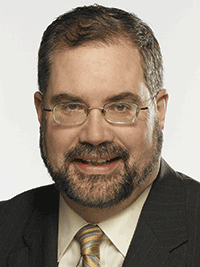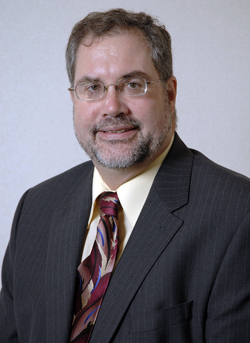
|
|
Following six months of intense negotiations, UUP has reached a tentative agreement with the state on a new four-year contract. I thank our hard-working team of negotiators who have spent countless hours in these critical discussions. You will be seeing them soon as we visit your chapter to brief you on the contract early this semester.
I’m pleased to tell you the tentative agreement includes a competitive salary package and several benefit improvements. Specifically, salary increases are included in each year of the contract retroactive to July 2, 2007. Service awards are included for full-time and part-time members. When the Negotiations Team visited you at the chapters before we finalized our proposals, many of you told us that tuition assistance for dependents was important to you. We heard you, and I’m pleased to tell you we negotiated a new joint labor/management program that will provide tuition assistance for dependents who attend any of SUNY’s state-operated campuses.
Details on the tentative agreement are included in an eight-page newsletter we mailed to every UUP bargaining unit member in January, called “2007-2011 Tentative Contract Agreement Frequently Asked Questions.†These FAQs are also posted on the UUP Web site. By early February, you will receive a mailing from UUP containing the full text of the contract, with highlights of the many changes and enhancements in the contract. We mail this to every bargaining unit member, so they would have full information about the agreement, and so that UUP members can cast an educated ballot on the agreement. Please be on the alert for these mailings; they are being sent to your address of record.
When you receive the FAQ newsletter, you will see our Negotiations Team held the line on health insurance premiums. We were also able to maintain the co-pays for generic and second-tier drugs to the same level as in the last contract — an amazing feat in light of the ever-increasing costs of prescription drugs. These are just a few examples of what is new in this tentative agreement, and I am looking forward to discussing these with you when the Team and I come to your campus.
In addition to reviewing and ratifying our contract, UUP members must now turn their attention toward the annual state budget process.
We’ve already begun the battle. In December and early January, UUP broadcast a television ad in the Albany area promoting our academic and professional faculty as “engines of growth†for the state’s economy. The timing of the ad was designed to influence the state’s budget. And guess what? It appears that is just what happened. The governor announced in his Jan. 8 State of the State address that he supports adding 2,000 full-time faculty to SUNY and CUNY.
Although it is certainly encouraging that the state’s highest elected official is publicly supporting additional higher education faculty, we cannot afford to be complacent. The state is facing an estimated $4 billion budget deficit. That means we must be proactive and vigorously advocate for a better SUNY budget and our other legislative priorities. We can expect organizations backed by big-business interests to be working hard to force state lawmakers to cut the state budget and essential services.
I have also started to push our legislative agenda by meeting with several state leaders. However, UUP needs your help, too. We need your continued activism throughout this legislative season, beginning with our Legislative Luncheon Tuesday, Feb. 12 in The Well of the Legislative Office Building in Albany. If you would like to participate and help us advocate for our issues, please let us know. Feel free to call me or call your chapter president to volunteer.
If you’re unable to join us Feb. 12, you will still have many other opportunities to spread the UUP message. We meet with legislators each Tuesday through the end of the session.
Together, we can again stop any proposed cuts to the SUNY budget and any delays on finding state funds to pay for the added full-time faculty that SUNY sorely needs.
Let’s continue to show our elected leaders why UUP is the union that makes SUNY work, and how SUNY can help “jump start†the state’s economy.




 The mission of the State University of New York is to provide high-quality, affordable, accessible higher education for all of New York’s citizens. Through the years, SUNY did a pretty good job in recruiting a diverse student body.
The mission of the State University of New York is to provide high-quality, affordable, accessible higher education for all of New York’s citizens. Through the years, SUNY did a pretty good job in recruiting a diverse student body. Another Labor Day has come and gone and it is apparent that unions are losing their grip on the holiday. Sure, you’ll find an occasional parade or picnic celebrating organized labor’s glorious history, but Labor Day 2007 looked a little different from those of just two or three decades ago. The number of parades and picnics has dwindled, as has the number of celebrants. That’s because the labor movement has taken it on the chin. Unions are no longer needed, the conventional wisdom goes, and labor’s demise is just reward for its interference with the marketplace. In this view, it’s not a bad thing that only about 7 percent of private sector workers are in unions.
Another Labor Day has come and gone and it is apparent that unions are losing their grip on the holiday. Sure, you’ll find an occasional parade or picnic celebrating organized labor’s glorious history, but Labor Day 2007 looked a little different from those of just two or three decades ago. The number of parades and picnics has dwindled, as has the number of celebrants. That’s because the labor movement has taken it on the chin. Unions are no longer needed, the conventional wisdom goes, and labor’s demise is just reward for its interference with the marketplace. In this view, it’s not a bad thing that only about 7 percent of private sector workers are in unions.